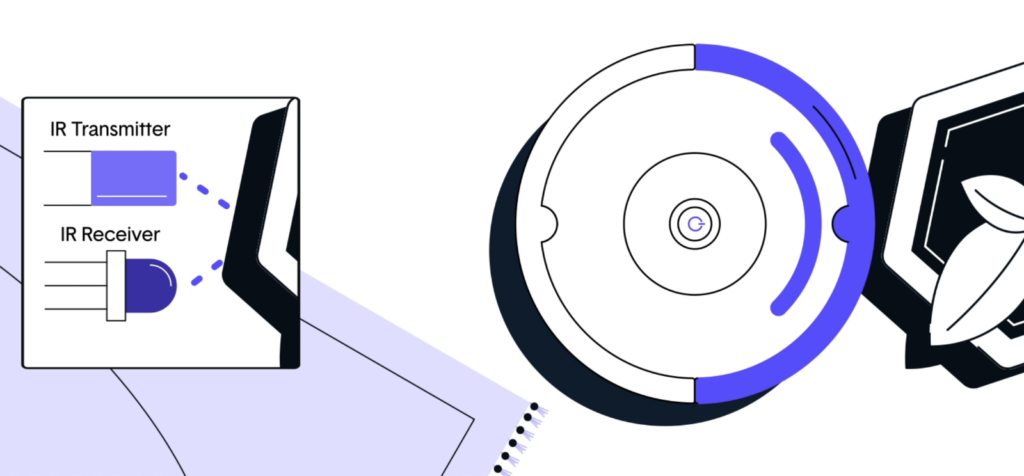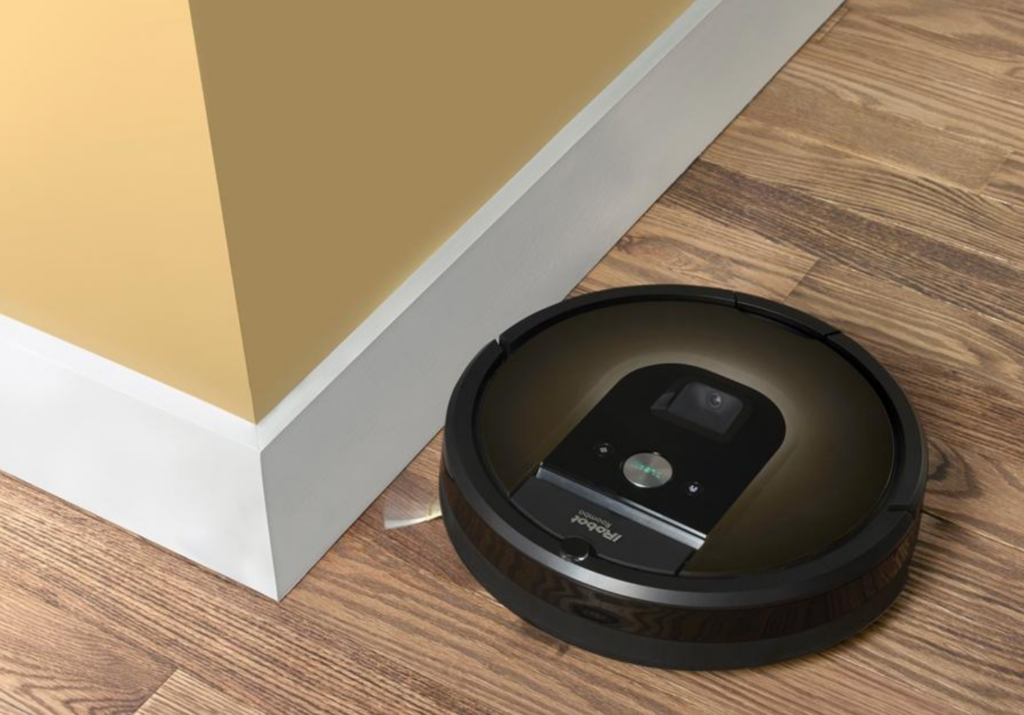The Roomba
When living in a household, there is always that one day that is reserved for cleaning up the house. Many feel that cleaning the house takes a lot of work and as a result, they buy the Roomba. However, they know nothing about what they just bought except for the fact that it’s something that will help clean their house. The Roomba is essentially an autonomous robotic vacuum made and sold by the company iRobot. This robot vacuum is disc-shaped and in the center of the robot there is a button that says clean. Under the vacuum there are two side brushes that is what the Roomba mainly uses to clean the floors and in the back there’s a detachable waste bin. The main function of the Roomba is to navigate through the floor areas of the home while sweeping at the same time. What allows the Roomba to do its job properly are the sensors that are in it. There are multiple sensors within the robot vacuum and each sensor plays a different role. Those sensors are infrared sensors, photocell sensors, and piezoelectric sensors. Within the robotic vacuum, there are four different kinds of infrared sensors and they are cliff sensors, bump/object sensors, optical sensors, and wall sensors.
One of the main sensors is the object/bump sensor. This sensor is what allows one of the patterns of the Roomba to function correctly. That pattern is the random bounce pattern. Random bounce is when the robot vacuum will navigate around the room while sweeping at the same time. When it bumps into an immovable object; it would change direction and it would begin sweeping the other way.


The main role of this sensor is to send infrared signals to tell the Roomba that it has encountered an immovable object. The infrared receiver receives those signals, and it tells the Roomba to back up and turn into a different direction. The Roomba would turn into a different direction and begin sweeping that way after those signals are sent out. The second type of infrared sensor is the cliff sensor. The main role of the cliff sensor is to detect when it’s approaching a “cliff”, which may be either stairs or ledges. When the cliff sensor detects a “cliff”, the robotic vacuum would come to a halt, slowly back up, and then turn the other way and continue sweeping in that direction.
Another important infrared sensor of the Roomba is the wall sensor. This sensor is what allows the second pattern of the Roomba, the wall-following pattern, to function. The wall-following pattern is when the Roomba detects a wall and instead of bumping into it and going the opposite way, it goes along the wall while sweeping at the same time. This allows the Roomba to sweep the perimeter of the room that it is in.


What the wall sensor does is that it would essentially detect when there’s a wall that may be in front of the Roomba and instead of bumping into it and triggering the object/bump sensor, it would go along the wall and follow it. The final infrared sensor that the Roomba has, is the optical sensor. The job of the optical sensor is to determine how far it has traveled. The optical sensors are in the wheels of the Roomba.
Not only does a Roomba have infrared sensors, but it also has photocell sensors and the piezoelectric sensor. Another name for the piezoelectric sensor is dirt detect sensor. That is another name for it, because that is what the sensor mainly does.

The main job of the piezoelectric sensor/dirt detect sensor is to detect spots that haven’t been thoroughly swept. When bits of dirt hit the sensor, it signals the robotic vacuum to go back to that one area and to sweep that area again. The second time that it goes and sweeps that area, the process would be a bit slower than usual as well as it being more thorough. The final sensor is the photocell sensor. The main role of the photocell sensor is to detect light as well as measuring the changes in light. This allows the Roomba to be able to sweep when all the lights are off in the room that it is in or even when it’s in the middle of the night.
Many people believe that the main purpose of the Roomba is to completely clean their homes. However, the true main purpose of the robotic vacuum is to lessen the amount of cleaning required in the future. Within a Roomba, there are multiple sensors. Each sensor is important and without even one of them, the robotic vacuum wouldn’t be able to function properly. For example, the photocell sensors and the infrared sensors. Both of those sensors go hand in hand with one another and those two sensors are always being used whenever the Roomba is active. In addition, the sensors are what allows the Roomba to have different patterns while cleaning. The different types of infrared sensors that it has, is what allows it to make sure that our floors are thoroughly swept. If people understood these things, then they would understand what they would need to do in order to ensure the vacuum doing a better job.
Works Cited
- Covington, Taylor. “How Does a Roomba Work? (Animation).” The Zebra, The Zebra, www.thezebra.com/resources/home/how-roomba-works/#:~:text=A%20Roomba%20uses%20its%20piezoelectric,thorough%20cleaning%20of%20the%20area.
No publication indicated. Article was last updated on March 4, 2021.
- “Robot Vacuums: Worth The Price Tag?” Qanvast, Qanvast, 13 Jan. 2017, qanvast.com/sg/articles/robot-vacuums-worth-the-price-tag-738.
No author indicated.
- Layton, Julia. “How Robotic Vacuums Work.” HowStuffWorks, HowStuffWorks, 3 Nov. 2005, electronics.howstuffworks.com/gadgets/home/robotic-vacuum2.htm.

